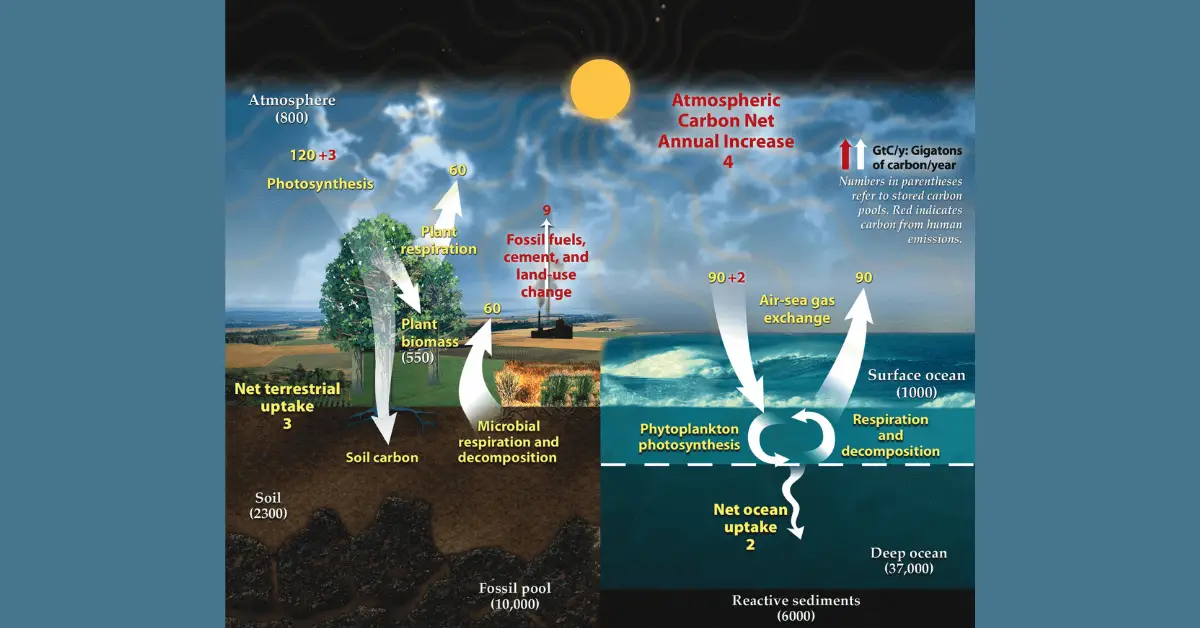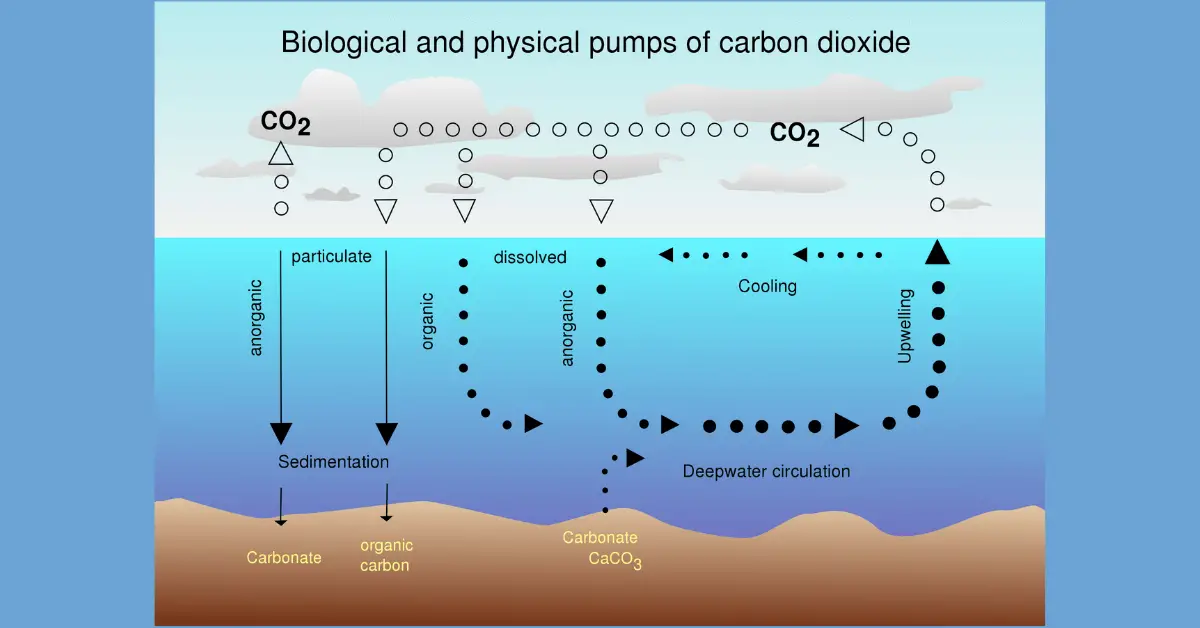Anything (natural or man-made) that absorbs more carbon from the atmosphere than it releases is known as carbon sink. Plants and oceans are the two most important carbon sinks in the world. Soil also stores carbon and is an active carbon sink.
To know how carbon sinks work, let’s discuss the above three examples individually.
Plants as carbon sinks:
Plants and vegetation are an important carbon sink. Plants prepare their food from carbon dioxide and water through photosynthesis. In this process, they absorb carbon dioxide from the atmosphere and release oxygen back to the atmosphere.
6CO₂ + 6H₂O + Sunlight → C₆H₁₂O₆ + 6O₂
Carbon dioxide is a major greenhouse gas that has a prominent role in global warming and climate change. The role of green vegetation to consume this gas makes plants and forests an important carbon sink. The release of oxygen back to the atmosphere (which is formed as a byproduct in the process of photosynthesis) makes them more valuable and necessary for the survival of humans and other creatures on the Earth. That is why, the Amazon rainforest (biggest forest in the world) is known as the lungs of the planet Earth.

Carbon sinks in Oceans:
Oceans are another carbon sink. They store carbon dioxide through a method known as carbon sequestration. Carbon sequestration is a series of procedures that capture carbon dioxide from the atmosphere and store it in the solid or dissolved forms. So prevent it from causing the warming of the atmosphere.
In this process, carbon dioxide dissolves into the ocean from the atmosphere, reacts with seawater and forms carbonic acid.
CO₂ + H₂O ⇌ H₂CO₃ ⇌ HCO3− + H+
The continuous interaction of carbonic acid with water molecules causes the formation of carbonate, which results in the increase of hydrogen ions concentration in the ocean and so lowers the ocean pH (acidify ocean). So, the increasing concentration of carbon dioxide in the atmosphere causes the acidification of the ocean. However, calcium carbonate acts as a buffer in this process and prevents large decreases in pH.
Currently, the emission of carbon dioxide is 10 GtC (gigatons of carbon) per year and the oceans absorb up to 2.4 Gt carbon dioxide per year. A study revealed that over the last 200 years, up to 1300 Gt carbon dioxide has been emitted to the atmosphere due to human activities, of which around 38% has been absorbed by the oceans.
Currently, the amount of carbon residing in the oceans is 39,000 GtC, while this quantity in the atmosphere is only 750 GtC. Ocean is a huge carbon sink, which has the capacity to reside more thousands gigatons of carbon dioxide.

Soil as carbon sinks:
Soil is another active carbon sink, which stores carbon through the process of sequestration.
Soil is composed of organic matter, organisms (microbes), minerals, liquids, and gasses, which combinely support life. Organic matter in the soil is basically broken-down plant matter, which is a large source of carbon-based compounds. That plant matter contains a large amount of carbon which they took from the atmosphere for photosynthesis when they were alive. So soil is an active carbon sink and stores or sequesters this carbon for a very long time, especially in colder climates where the decomposition process is extremely low. If this carbon was not stored in the soil, it would return back to the atmosphere as carbon dioxide gas (the major greenhouse gas responsible for global warming and climate change).
The conversion of grasslands and forests into farmlands disturb the structure of soil and cause the release of much of the stored carbon into the air as carbon dioxide.


